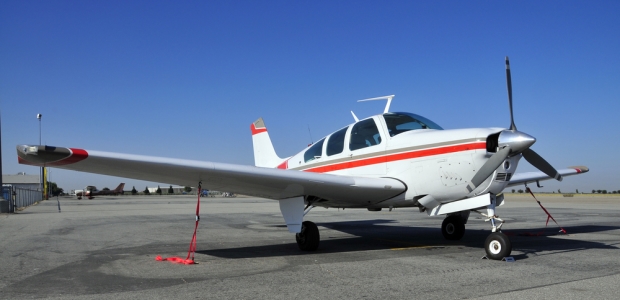
FAA Tool Helps GA Pilots Prevent Loss of Control Accidents
The Flight Risk Assessment Tool helps them create realistic, numerical thresholds that trigger additional levels of scrutiny prior to a go/no go decision for a flight.
The Federal Aviation Administration and general aviation (GA) groups' #Fly Safe national safety campaign is working to educate the GA community on how to prevent Loss of Control accidents this flying season. FAA Deputy Administrator Mike Whitaker participated in this month's Loss of Control solution announcement, dated Aug. 3; these are developed by the agency's FAASTeams (FAA Safety Teams).
"Each month on faa.gov we're providing pilots with a Loss of Control solution developed by the team of experts. They have studied the data and developed solutions – some of which are already reducing risk. We hope you will join us in this effort, and spread the word. Follow #FlySafe on Twitter, Facebook and Instagram. I know that we can reduce these accidents by working together as a community," Whitaker wrote in his message.
The August solution involves a Flight Risk Assessment Tool (FRAT) offered by FAA. It is an easy-to-use, visual tool that will help GA pilots create realistic numerical thresholds that trigger additional levels of scrutiny prior to a go/no go decision for a flight, and there are many FRAT options available for mobile devices and apps for flight planning, weather briefing, and flight monitoring/tracking, according to the agency.
The FRAT should have three possible score ranges:
- Green: Go fly!
- Yellow: Try to mitigate some of the higher score items.
- Red: No go.
The FAASTeam (FAA Safety Team) Learning Center Library's Flight Risk Assessment Tool is available here in several formats.
A Loss of Control accident occurs when there is an unintended departure of an aircraft from controlled flight. "LOC can happen because the aircraft enters a flight regime that is outside its normal flight envelope and may quickly develop into a stall or spin. It can introduce an element of surprise for the pilot. Contributing factors may include: poor judgment/aeronautical decision making, failure to recognize an aerodynamic stall or spin and execute corrective action, intentional regulatory non-compliance, low pilot time in aircraft make and model, lack of piloting ability, failure to maintain airspeed, failure to follow procedure, pilot inexperience and proficiency, or the use of over-the-counter drugs that impact pilot performance," according to FAA. The agency reports approximately 450 people are killed each year in GA accidents, and loss of control is the leading cause of those accidents: On average, one fatal LOC accident occurs every four days.